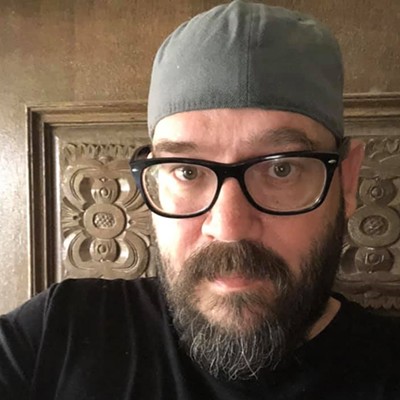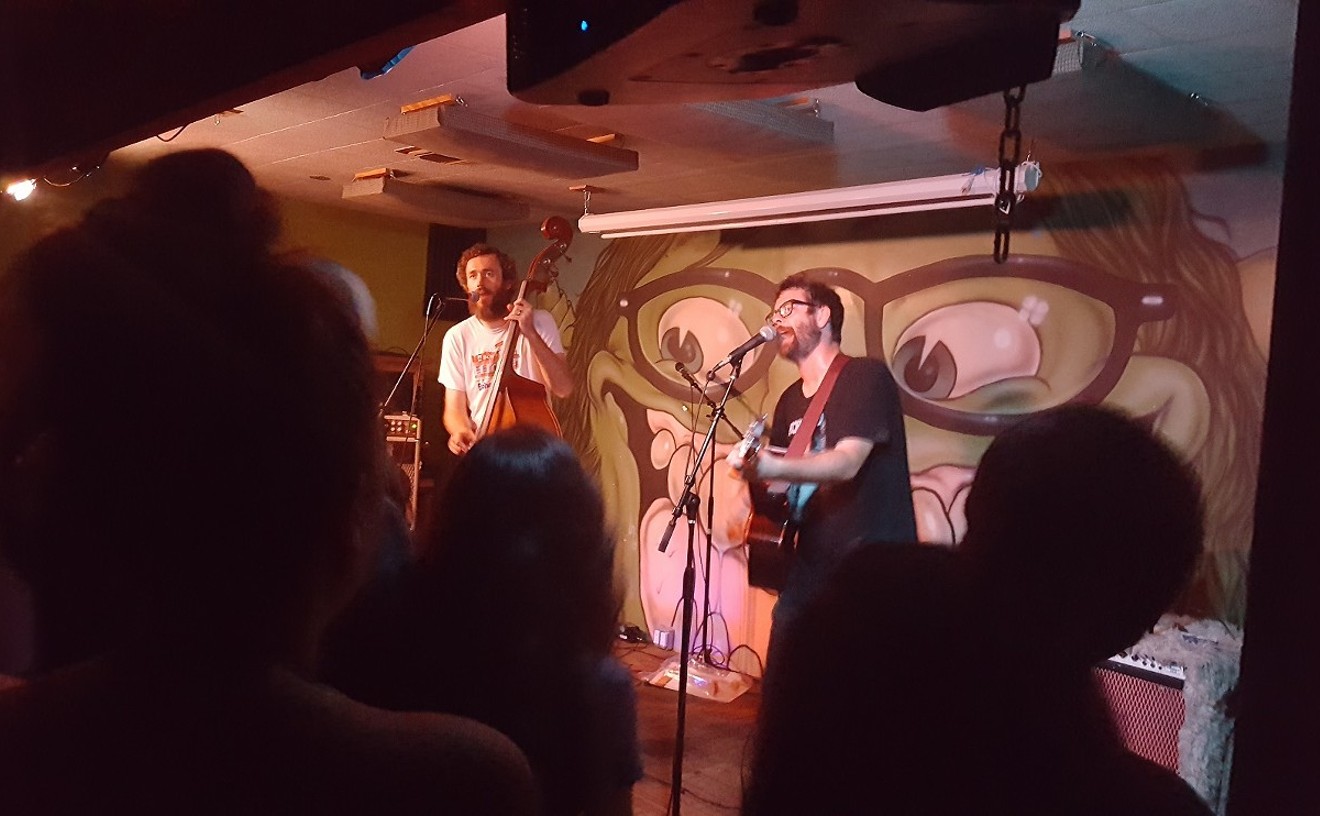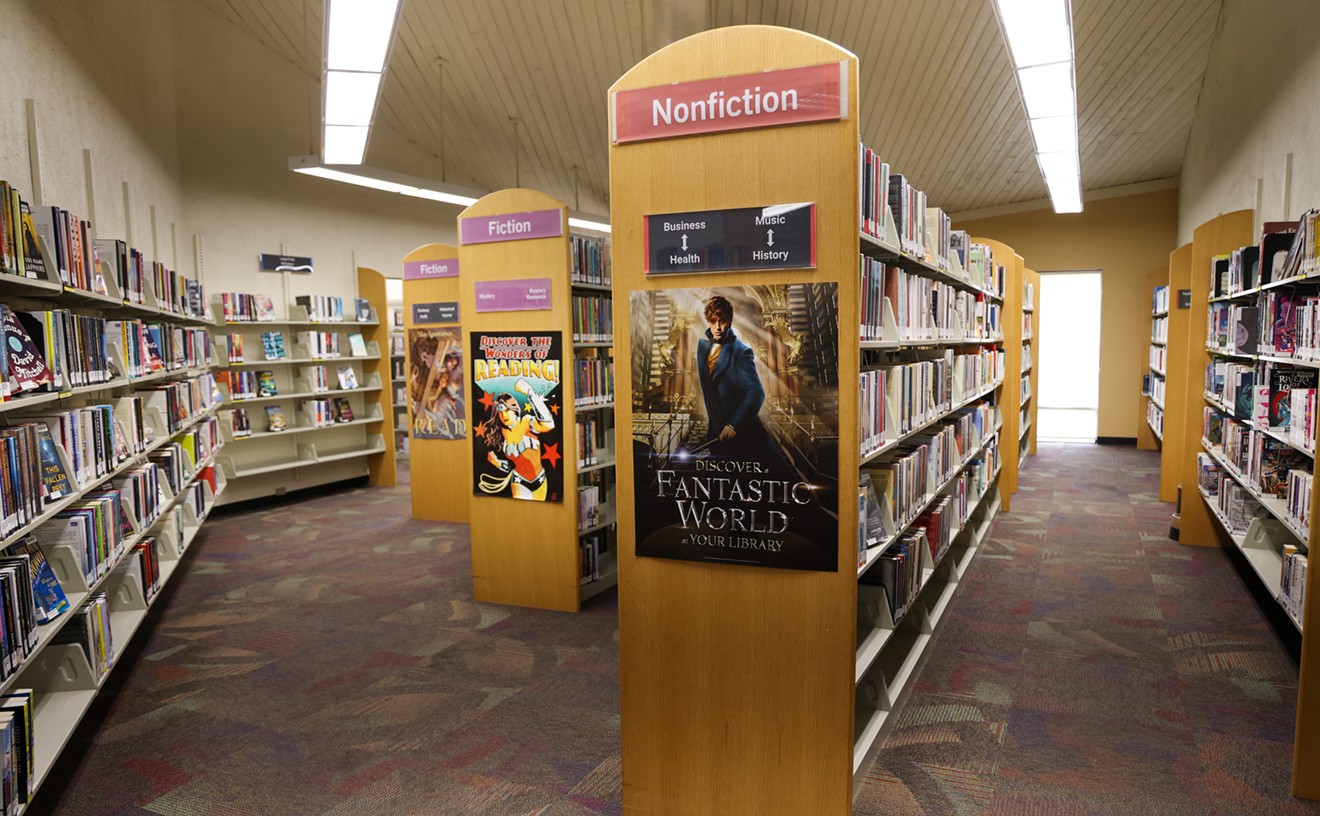A word to the wise: Those who consider themselves close-minded, easily offended (or even the teensiest bit squeamish) might want to refrain from visiting Phoenix Art Museum tomorrow evening.
And based on some of the more unpleasant and odious works -- including imagery rife with corpses, Ku Klux Klan members, fecal matter, and bodily fluids -- that Serrano has produced over the past two decades, the artist most certainly falls into that category
That's not to say that Serrano's work has been made simply for shock value alone. Far from it. Case in point: Piss Christ.
As you'll likely hear during tomorrow night's discussion between Fischl and Serrano, the artist's strict Catholic upbringing in New York City by his Honduran mother and Cuban father imbued his early work with religious overtones, particularly Piss Christ.
Although the artist admits to a fascination with the profane and repulsive nature of bodily fluids (as well as taboo imagery in general), the work is more than just the blasphemous act of placing a religious icon in an utterly foul substance.
It contains allusions toward Serrano's feelings about the commercialization of Christian iconography and his conflicted feelings about his own beliefs. Another work from that era is Heaven and Hell, a photograph depicting a smirking priest ignoring a bound and blood-soaked nude woman.
In a 1991 interview with High Performance Magazine, the artist explained his belief that his work, while religious, isn't sacrilegious.
"I am drawn to Christ but I have real problems with the Catholic Church. I don't go out of my way to be critical of the Church in my work, because I think that I make icons worthy of the Church."
Try telling that to church officials, religious pundits, and right-wing politicians (including the late Senator Jesse Helms), the latter of whom forced the National Endowment of the Arts to rescind numerous grants from Serrano after Piss Christ debuted.
Such reprisals didn't deter Serrano in the slightest. In addition to his fascination with religion and bodily fluids, he admits to an enthrallment with taboo and profane subject matter, be it his Blood and Semen series from the earl '90s (where he made Rorschach-like patterns by pressing the titular substances between panes of glass) or the human remains he photographed for his Images of the Corpse in 1996.
Serrano has also long been interested in a "nobility of society's outcasts," including the cibachrome portraits New York homeless for his Nomad exhibition or the members of Ku Klux Klan that the artist captured on film for Klansman.
In the aforementioned 1991 interview, Serrano laid out the raison d'être behind the overall offensiveness of his art: forcing his viewers - be they politicians, critics, or ordinary art connoisseurs -- to contend with the unpleasant in order to get his message across.
There's also a certain sublime beauty in his work, he admits.
"My work does more than just shock. It also pleases," Serrano stated. "My work has often been spoken of in terms of the sacred and the profane. My feeling is that you can't have one without the other. You need both."
Serrano will discuss his work with Fischl on Wednesday, April 16, at Phoenix Art Museum, 1625 North Central
Avenue. Admission is free and the discussion will start at 7 p.m.











